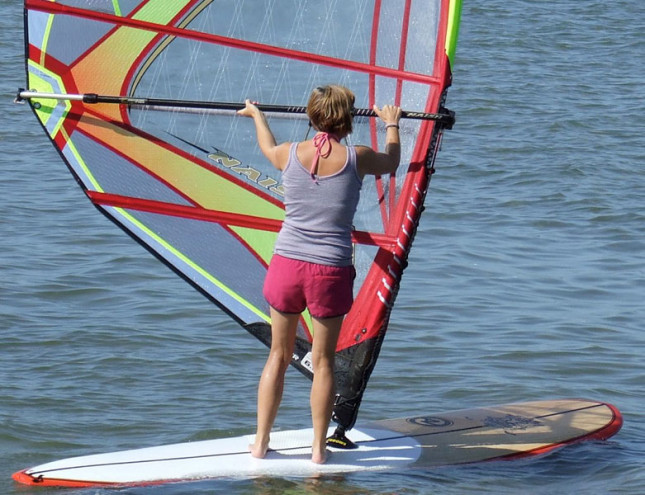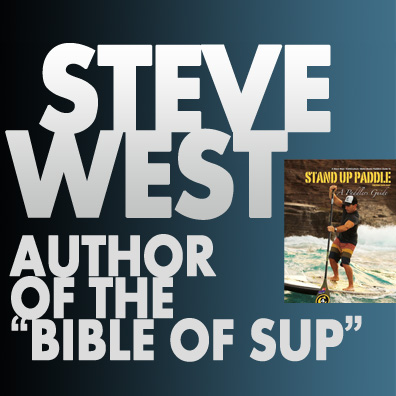
A Cautionary Tale
Boss Man’s note: This is another interesting topic from Steve West that’ll definitely get you thinking. Steve is the author of Stand Up Paddle: A Paddler’s Guide and is sharing his unique insights here on SUPracer.com each week. So check out his latest piece below and then go grab a copy of the “Bible of SUP” if you haven’t already. I think it’s a brilliant book.
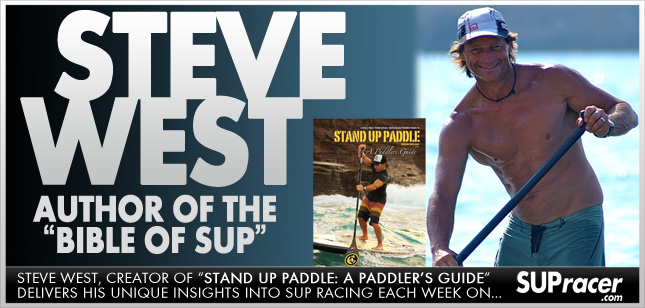
Last week’s taster from Stand Up Paddle – A Paddlers Guide, considered the impact of such luminaries as Tom Blake who effectively took what was known as surfboard paddling and introduced a purpose made prone paddle board in the mid 1920s causing a division in opinion, but brought specificity to the design of the craft and the skills associated with the discipline. Today, prone paddle board designers have much to offer to the design of stand up paddle race boards, which fall along similar evolutionary pathways. This week, something more controversial and food for thought in considering the evolution of windsurfing, its demise and determination of the essence of stand up paddle boarding and why it matters.
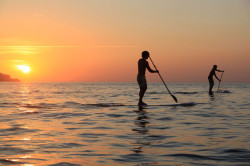
Stand up paddle boarding as an evolving sport, has interesting challenges ahead, not least of which being the simple question of determination of its essence and within this maelstrom of flux, the sport’s uniqueness needs to stand its ground in raging against the notion that it is definitively not a surf sport, but ultimately, very much more.
If you’re asking yourself why windsurfing brands / manufacturers have leapt into the sport, producing massive volumes of boards over an unfathomable range, the answer is simple; the windsurfing industry is in decline, having shot itself in the proverbial foot helped along by magazines and videos having squeezed the sport dry, to a point of leaving only the residue of high wind and wave sailing to the detriment of all other areas of the sport’s fundamental appeals. In 2012 windsurfing was briefly dropped as an Olympic sport, replaced by kiteboarding, then reinstated, but for how long?
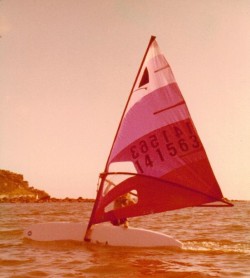
What seems self evident, is the continued powerful commercial reality, that the sex appeal and lure of the surfing lifestyle and all that it alludes to, from tropical beaches to azure waters, what you would rather be doing, where you would rather be and who you would rather be doing it with, continues to be a potent selling tool. Better to jam pack your brochures predominantly with photos of waves than flat water imagery if you want to sell the dream.
In a 1984 Windsurfer® brochure – Hoyle Schweitzer (Yes, Zane’s Grandfather – I used to race against his father, Matt) says, ‘A futuristic vehicle for your dreams has risen out of the western sea, bringing new dimensions to life itself. How can such a simple, easy-rider device bring so much joy to millions? Because it puts you – with your skills and your dreams and your hidden potential – into a perfect interaction with wind and water. Thus, this one small vehicle brings with it the power to make your visit here on planet earth even more fulfilling.’ Sure sounds what stand up paddle boarding could be, should be and should remain.
Not driven home as a surf sport, but fully embraced as a sailing sport, it promised aspirations of friendships, communing with nature, health and fitness, the buzz of gliding over water and to some considerable extent it conveyed the feeling that we were part of a pioneering spirit – a new frontier in water sports.
Inevitably as windsurfing morphed into adulthood, magazines worldwide lost interest in promoting the mellower nature of the sport. No longer was it about the long boards and casual summer days spent clowning around in light winds with friends and family. It had been driven relentlessly through the evolution of equipment and the growing capabilities and demands of the rider who had grown ever more hardcore. It was now a high wind surf sport, first and foremost.
Magazine covers no longer printed dreamy sunsets, silhouetted by triangular sails or bikini clad babes gliding over glassy waters, imagery to which every Tom Dick and Harry related and would rush to pick up at the News Stand. Front covers now jostled to outdo one another, publishing the most outrageous big wave image they could lay their hands on.
Worse still, the elderly, the frail, the more mellow at heart, were hung out to dry and forgotten; expendable pioneering participants no longer relevant to the way forward. Local races died out, social sailing folded, long boards died a natural death, flat water freestyle became a lost art, boards and kit morphed into moss and dust collectors in garages and gardens on a global scale. It had become in your face niche interest material, which slowly but surely ousted the elderly, kids and thousands who neither related to surf or had an interest in it, let alone lived in close geographical proximity to where conditions permitted this form of hardcore sailing.
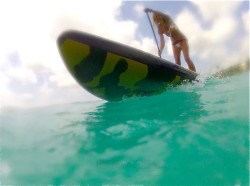 Mike Waltz’s (Maker of ‘The First Glide’) classic 80s line (which could apply to downwind paddling) ‘Wind and water, natures most powerful elements, to combine them in harmony is the ultimate free ride’ or words to that effect, remain as a poignant, encapsulated notion of the essence of the sport at the time, or at least what it had set out to be.
Mike Waltz’s (Maker of ‘The First Glide’) classic 80s line (which could apply to downwind paddling) ‘Wind and water, natures most powerful elements, to combine them in harmony is the ultimate free ride’ or words to that effect, remain as a poignant, encapsulated notion of the essence of the sport at the time, or at least what it had set out to be.
The net point of this comparison? Simply put, stand up paddle boarding is the singular most accelerated water sport of our time, largely because of the intervention of the windsurfing industry (and the internet) who need this sport to work for the sake of their own survival. If the sport is going to be goose-marched down the path of its extremes, promoted and portrayed as a surf sport as a consequence of the media and magazines, led by their editors controlling content and photo editors promoting imagery which serves to alienate the elderly, women or children’s involvement, then stand up paddle boarding will be a dead sport floating.
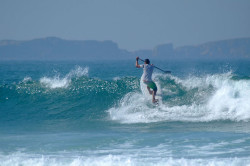 Add to this the machinations of surfing associations who wish to ‘govern’ in particular and we will already be more than three-quarters of the way to backing the sport into a singular niche – that of surfing. Thankfully, some magazines seem to cover a good deal of content regarding flat water recreational paddling and long may that continue so as the sport can be related to by as broad a cross section of the community as possible. The worrying issue remains, who will win out on the issue of governance and what will that say about each region of the world, where this might vary?
Add to this the machinations of surfing associations who wish to ‘govern’ in particular and we will already be more than three-quarters of the way to backing the sport into a singular niche – that of surfing. Thankfully, some magazines seem to cover a good deal of content regarding flat water recreational paddling and long may that continue so as the sport can be related to by as broad a cross section of the community as possible. The worrying issue remains, who will win out on the issue of governance and what will that say about each region of the world, where this might vary?



